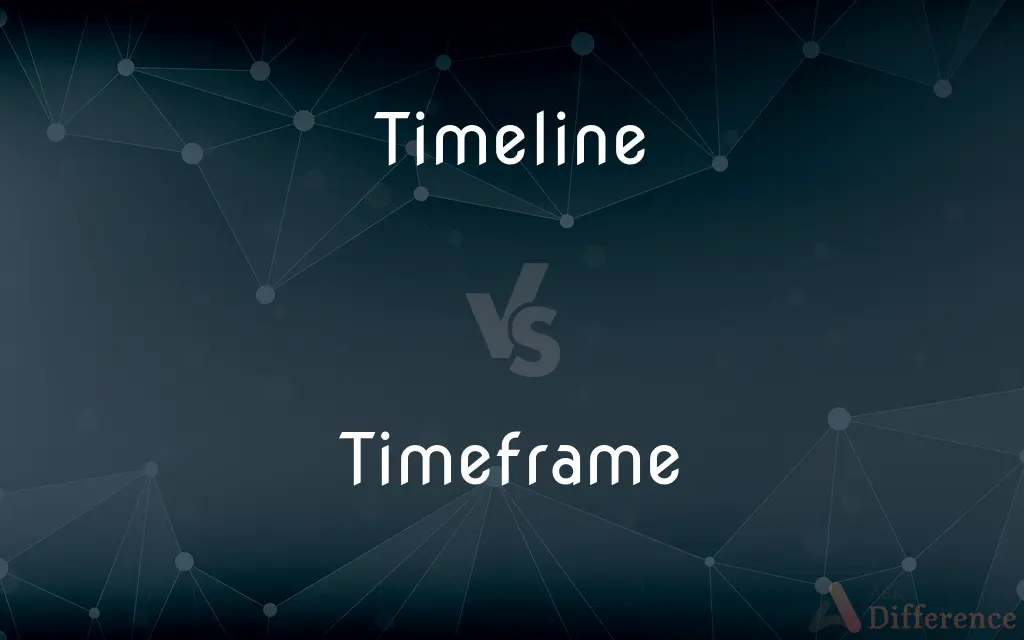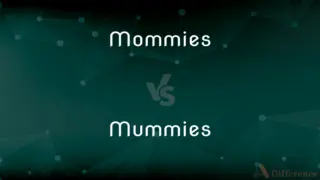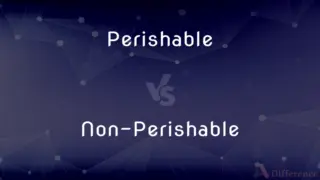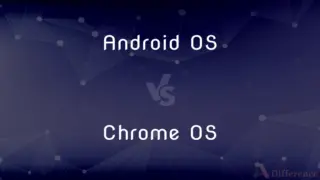Timeline vs. Timeframe — What's the Difference?
By Tayyaba Rehman — Published on September 27, 2023
A "timeline" is a visual representation of events in chronological order. A "timeframe," however, is a specified period in which something occurs. They differ as one visually displays sequences, while the other defines a period duration.

Difference Between Timeline and Timeframe
Table of Contents
ADVERTISEMENT
Key Differences
A timeline typically is a graphical representation illustrating a sequence of events along the time axis. It visually delineates when specific events occurred or are planned to occur, often used to portray historical events, project milestones, or developmental stages in a clear and concise manner. A timeframe, in contrast, is a designated or allotted period during which an activity takes place or is completed. It doesn’t visualize sequences but sets the boundaries, the start and end, for when activities are to occur, and is vital in planning and scheduling contexts to determine deadlines and duration.
Timelines are instrumental in various fields, such as history, project management, and education, to convey the temporal sequence and the relation between events or phases, offering a visual tool for understanding chronological development or planning future actions. They often include dates, descriptions, and may be accompanied by images or other forms of data representation. Conversely, timeframes are crucial for defining the temporal limits within which objectives are expected to be achieved. They are ubiquitous in everyday language, business planning, and academic settings, expressing the temporal constraints and expectations for task completion.
The distinction between timeline and timeframe is also embedded in their application. While timelines are more about conveying information and providing insights into the sequence and timing of events or stages, timeframes are predominantly about setting limits and expectations regarding the duration within which tasks or objectives should be fulfilled. A timeline may include multiple events, milestones, or stages represented along a time axis, whereas a timeframe typically relates to the duration allocated for a single task, objective, or a set of activities.
In essence, a timeline is more about visualization and representation of time-related information, helping users to comprehend the chronological sequence and temporal relationships between different events or stages. In contrast, a timeframe is more about quantification of time, establishing the boundaries and duration for activities or objectives, and is integral to managing time efficiently in various endeavors, such as project execution, academic research, or event planning.
Comparison Chart
Definition
A graphical representation of events in chronological order.
A specified period in which something occurs or is completed.
ADVERTISEMENT
Purpose
To visualize sequences and relationships of events.
To define the duration and limits for activities or objectives.
Application
In fields like history, project management, and education for depicting sequences.
Predominantly in planning and scheduling to set temporal boundaries and expectations.
Representation
Visual, often accompanied by descriptive elements.
Quantitative, expressing the duration between a start and end point.
Information Conveyed
Sequence and timing of multiple events or milestones.
Duration and limits for a single task or set of activities.
Compare with Definitions
Timeline
A timeline is a visual representation of events listed in chronological order.
The historian created a detailed timeline to illustrate the events of the medieval period.
Timeframe
A timeframe is a designated period during which something happens or is planned to happen.
The construction of the building has a timeframe of two years.
Timeline
It is a tool used to visualize, understand, and present time-based information.
A timeline of evolutionary events helps in understanding the development of life on Earth.
Timeframe
A timeframe sets the boundaries, indicating the start and end, for activities or plans.
We need to complete the research within the allocated timeframe.
Timeline
Timeline often includes dates, descriptions, and sometimes visual elements to represent events.
The documentary featured a timeline with images and descriptions to portray historical events accurately.
Timeframe
It represents the temporal constraints and expectations for accomplishing goals.
The timeframe for the delivery of the product is by the end of this month.
Timeline
A timeline is a display of a list of events in chronological order. It is typically a graphic design showing a long bar labelled with dates paralleling it, and usually contemporaneous events.
Timeframe
It denotes the duration in which specific tasks or objectives are to be achieved.
The project has a tight timeframe, requiring efficient use of resources.
Timeline
A schedule of activities or events; a timetable.
Timeframe
Timeframe is the quantified period allocated for the completion of a task or set of tasks.
The students were given a timeframe of one week to submit their assignments.
Timeline
A chronology.
Timeframe
A period during which something takes place or is projected to occur.
Timeline
A representation or exhibit of key events within a particular historical period, often consisting of illustrative visual material accompanied by written commentary, arranged chronologically.
Timeframe
Alternative spelling of time frame
Timeline
A graphical representation of a chronological sequence of events (past or future); a chronology.
Timeline
A schedule of activities; a timetable.
Timeline
(scifi) An individual universe or reality, especially a parallel/alternate one in which events differ from actual history, or differ from the established canon of a fictional world.
Timeline
To analyse a sequence of events or activities.
Timeline
To display such a sequence graphically.
Timeline
It denotes a graphical depiction of the sequence and duration of events.
The project manager used a timeline to track the progress of the project’s different phases.
Timeline
A timeline conveys the chronological sequence and relationships between occurrences.
Students made a timeline to understand the succession of dynasties in ancient China.
Common Curiosities
Can a timeline represent future events?
Yes, a timeline can represent planned or predicted future events, often used in project management or planning.
Is a timeline always graphical?
Typically, yes. A timeline usually visually represents events in chronological order to convey sequences and relations effectively.
Is a timeframe always exact?
Not necessarily. A timeframe can be approximate, providing an estimated period for activity completion.
Can multiple events be represented on a timeline?
Yes, a timeline can depict multiple events, milestones, or stages along a time axis to show sequences and relations.
Can a timeframe be extended?
Yes, depending on the context, a timeframe can be extended if necessary, adjusting the duration for activity completion.
Can the start and end of a timeframe be the same?
Typically, a timeframe includes a duration between the start and end points, but theoretically, it could reference a specific point in time.
Does a timeframe represent a single period?
Yes, a timeframe typically represents a single continuous period with a defined start and end during which something occurs.
Can a timeline include descriptions?
Yes, timelines often include dates and descriptive elements to provide context and details about the represented events.
Is a timeframe always future-oriented?
No, a timeframe can reference past, present, or future periods, depending on what is being discussed or planned.
Can a timeline be interactive?
Yes, digital timelines can be interactive, allowing users to explore events, view additional information, and navigate through time.
Can timelines be used in education?
Yes, timelines are valuable educational tools to help students understand historical events, sequences, and chronological relations.
Can a timeframe be undefined?
Typically, a timeframe has defined start and end points, but in some contexts, it might be left open-ended or approximate.
Share Your Discovery

Previous Comparison
Mommies vs. Mummies
Next Comparison
Perishable vs. Non-PerishableAuthor Spotlight
Written by
Tayyaba RehmanTayyaba Rehman is a distinguished writer, currently serving as a primary contributor to askdifference.com. As a researcher in semantics and etymology, Tayyaba's passion for the complexity of languages and their distinctions has found a perfect home on the platform. Tayyaba delves into the intricacies of language, distinguishing between commonly confused words and phrases, thereby providing clarity for readers worldwide.














































